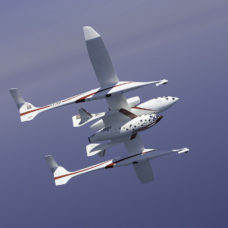In space, there’s an unseen danger to space travelers.
The danger here is of a biological origin. Bacterial lifeforms are the most likely alien life that we’ll find in outer space, if we ever find anything.
Exposure to alien microorganisms could pose a serious risk to the life of future astronauts who could then bring alien diseases back with them to Earth.
On the other hand, when humans head toward space, they also could infect the places they visit with earthly germs.
Safety precautions will have to be taken in this regard for future long-term space missions, to the Moon or Mars or beyond.
To build up the knowledge that would help it develop such precautions, NASA investigated the presence of microbes living on the International Space Station.
The International Space Station: a Space Petri Dish
The International Space Station (ISS) being as it is, a tightly-closed system; subject to microgravity, and exposed to radiation, is quite a fragile environment for crew members to live inside.
Now home to six astronauts, the ISS has seen many others come and go, along with all the supply cargos they need, which makes it susceptible to being infected by disease-carrying bacteria.
A NASA study found the ISS to be teeming with bacteria and fungi, the same as those usually found in gyms, health care facilities, and other conducive environments to germs here on earth.
Researchers at the NASA Jet Propulsion Laboratory (JPL) made a comprehensive catalog of all the microbes and fungi on the space station.
Besides, conventional culture-based methods, the team used state-of-the-art molecular techniques to thoroughly assess bacterial, and fungal populations on the soon-to-be-retired station.
Over 14 months, and during three flight missions, they took samples at eight locations in the station.
Read More: Scientists Measure Human Exposome for the First Time
The corresponding author, JPL’s Dr Kasthuri Venkateswaran, said:
“It is important to identify the types of microorganisms that can accumulate in the unique, closed environments associated with spaceflight, how long they survive and their impact on human health and spacecraft infrastructure.”
The team found that microbes on the ISS were “mostly human-associated”, and cataloged some opportunistic pathogenic microbes such as Staphylococcus, Pantoea, and Bacillus.
These microbes could induce diseases to humans here on Earth, but it’s unclear how they interact with the tenants of the space station.
“Predominant in gyms, offices, and hospitals”, microbes such as Staphylococcus aureus can be found on the skin. Enterobacter bacteria is more associated with the gastrointestinal tract.
The potential harm these microbes and fungi can cause to astronaut health could actually be to the ship itself. Some microorganisms the team found on the ISS surfaces have been shown to be involved in corrosion on Earth but, again, their impact on the structure of the space station and spacecraft remains to be investigated.



















Comments (0)
Least Recent